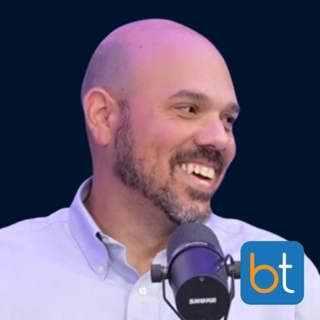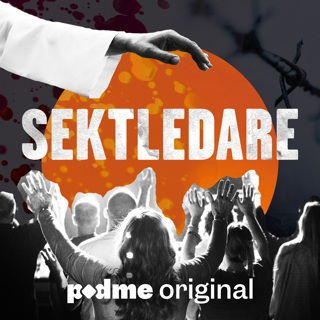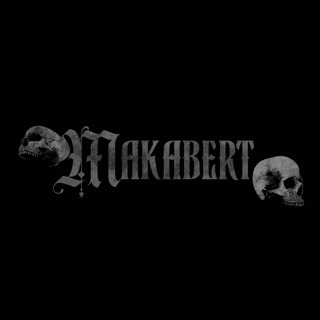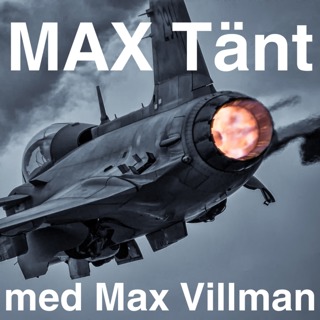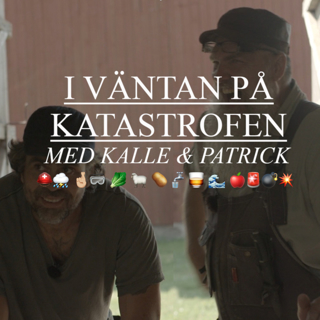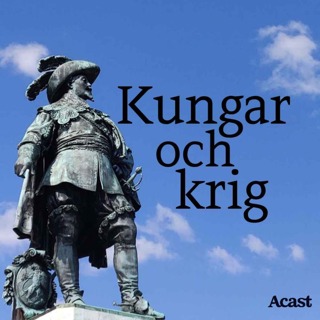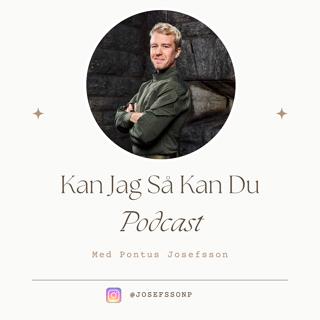
Ep. 107 Management and Treatment of Pulmonary AVM's with Dr. Theresa Caridi
Dr. Theresa Caridi, Section Chief of Interventional Radiology at UAB School of Medicine, discusses the pathophysiology and treatment of Pulmonary AVM's, as well as the importance of multidisciplinary management of patients with Hereditary Hemorrhagic Telangiectasia (HHT). --- SHOW NOTES In this episode, Dr. Theresa Caridi joins Dr. Christopher Beck to discuss management and treatment of pulmonary arterial venous malformations (AVMs). We explain what pulmonary AVMs are, why they can be dangerous, and how patients are referred to Hereditary Hemorrhagic Telangiectasia (HHT) Centers of Excellence. We discuss the clinical manifestations of HHT and why it is important to screen for HHT when diagnosing a patient with a pulmonary AVM. Dr. Caridi tells us about the imaging and how to plan treatments for different types of pulmonary AVM patients. We review the pre-procedural steps and the intricacies of using anesthesia for PAVM treatment. We discuss catheters, access sites, and how to get the images needed. Dr. Caridi shares her advice on working closely to the feeding artery and some of the challenges when using coils. We discuss what care looks like post-procedure and when to follow up patients. We talk about some of the common side effects that occur after pulmonary AVM treatment. We explain how to decide the number of lesions to treat at one time, and Dr. Caridi gives some advice for those who do not work at an HHT Center of Excellence, but want to perform this procedure. --- RESOURCES Image Guided Interventions: Expert Radiology Series (IR Textbook by Matthew A. Mauro) https://www.elsevier.com/books/image-guided-interventions/mauro/978-0-323-61204-3 https://www.amazon.com/Image-Guided-Interventions-Matthew-Mauro-FACR/dp/0323612040/ref=sr_1_1?dchild=1&keywords=Image-Guided+Interventions%3A+Expert+Radiology+Series&qid=1612320492&s=books&sr=1-1 PAVM Embolization: An Update https://www.ajronline.org/doi/10.2214/AJR.10.5230 Treated pulmonary arteriovenous malformations: patterns of persistence and associated retreatment success https://pubmed.ncbi.nlm.nih.gov/23912618/ Medtronic Peripheral Embolization Products https://www.medtronic.com/us-en/healthcare-professionals/products/cardiovascular/peripheral-embolization.html
25 Jan 20211h 1min

Ep. 106 Treating Extraspinal Painful Bony Metastases with Dr. Steve Yevich
Dr. Steven Yevich from MD Anderson Cancer Center talks with us about his approach to Treatment and Management of Painful Extra-spinal Bony Metastases. --- SHOW NOTES In this episode, Dr. Steve Yevich joins Dr. Michael Barraza to discuss treatment of extraspinal painful bony metastases. Dr. Yevich tells us about his training in interventional oncology at Gustave Roussy Cancer Campus in Paris, and we discuss how he adjusted to identify the individual needs of the hospital when he came back to the US. We explain how to go into a case with either curative or palliative intent. Dr. Yevich shares when he would do soft tissue ablation around nerves and the location of the metastases he commonly treats. We emphasize the anatomic considerations to determine if ablation for the extraspinal bony metastases is feasible. We discuss some of the advanced techniques Dr. Yevich learned in Paris and the two types of cases that may need pre-ablation embolization. We discuss advancements in technologies and devices that have allowed for more creative solutions in IR.
18 Jan 202125min

Ep. 105 A Career of Innovation with Dr. Michael Dake
Society of Interventional Radiology (SIR) President Dr. Michael Dake tells us stories of the Aortic and Endovascular Innovations he participated in throughout various stages in his career. --- EARN CME Reflect on how this Podcast applies to your day-to-day and earn AMA PRA Category 1 CMEs: https://earnc.me/e1zsGc --- SHOW NOTES In this episode, Dr. Michael Dake joins Dr. Bryan Hartley to discuss his career of innovation as a clinician, teacher, and researcher. Dr. Dake tells us how he shifted from working in internal medicine to interventional radiology with the help of his mentors. We discuss the challenges of starting a new residency, and Dr. Dake shares how he knew he wanted to follow a different career path in vascular work. We review the different types of cases that came up from working with cardiac surgeons and other specialties outside of IR. We discuss some lessons learned from working on the clinical side and the industry side of IR. Dr. Dake explains which failures have stuck with him and touches on why relationships and collaboration are so important. We discuss his current work on a liquid embolic and how involvement in innovative opportunities has shaped Dr. Dake’s career. --- RESOURCES ISET; use discount code: BACKTABLE https://www.iset.org
11 Jan 202152min

Ep. 104 Bringing IR to East Africa: The Road2IR Story with Dr. Fabian Laage Gaupp
Dr. Fabian Laage Gaupp tells us the origin story of Road2IR.org, an initiative to build self-sustaining IR training programs in East Africa. In collaboration with Yale and Emory Departments of Radiology, Road2IR has helped establish East Africa’s first accredited IR training program in Tanzania! --- SHOW NOTES In this episode, Dr. Fabian Laage Gaupp joins Dr. Aaron Fritts to discuss his work in The Road2IR training program. We discuss the beginnings of the program and how they worked to build the first generation of interventional radiologists as well as nurses and technologists in Tanzania. We discuss the types of procedures that the program offers and how they have adapted to the needs of the communities they work with. We explain how the training measures have changed during the COVID-19 pandemic, and we examine the importance of having a certain mindset while working in this program. Dr. Laage Gaupp tells us about the sedation certificate nurses can train for and their plans for expanding the program to Rwanda. We discuss some of the challenges of shipping imaging equipment and other disposable equipment. Dr. Laage Gaupp explains why he thinks IR will gain popularity in Africa, and we talk about how to get involved in the Road2IR program. --- RESOURCES Tanzania IR Initiative, Training the First Generation of Interventional Radiologists https://www.clinicalkey.com/service/content/pdf/watermarked/1-s2.0-S1051044319306876.pdf?locale=en_US&searchIndex= Road2IR website https://www.road2ir.org/ Social Media Accounts Instagram: @road2ir Twitter: @Road2IR Facebook: https://www.facebook.com/road2IR/
4 Jan 202139min

Special 100th Episode Tribute Interview with Dr. Mary Costantino
Dr. Mary Costantino interviews the BackTable Team in honor of hitting the 100th episode mark. We had a great time telling the origin story of BackTable, reminiscing the early days of the podcast, and where we hope to go in 2021. It doesn't happen without all the amazing guests and guest hosts along the way. --- SHOW NOTES In this special episode, Dr. Mary Constantino interviews Dr. Aaron Fritts, Dr. Christopher Beck, and Dr. Michael Barraza to discuss the journey of the BackTable Podcast. Co-founder Dr. Aaron Fritts tells us why he wanted to start BackTable and how it transformed from an app to a podcast. Dr. Beck and Dr. Barraza share their experiences getting involved in the podcast. We discuss some of the early challenges they faced while trying to get started, and we explain the lessons learned from these experiences. We discuss plans to expand to ENT and urology topics as well as other plans for 2021. Dr. Fritts touches on the learning process of editing audio and creating a podcast. Dr. Fritts, Dr. Beck, and Dr. Barraza share their goals and hopes for the BackTable podcast. We discuss the work that goes on behind the scenes and the team that makes it all possible.
31 Dec 20201h 4min

Ep. 103 Getting it Right on Insurance Claims with Dr. Ezana Azene
Dr. Ezana Azene M.D., Ph.D. talks with us about how he found his side gig reviewing insurance claims, and shares tips on how to avoid insurance claim denials for procedures. --- EARN CME Reflect on how this Podcast applies to your day-to-day and earn AMA PRA Category 1 CMEs: https://earnc.me/OHtkwE --- SHOW NOTES In this episode, Dr. Ezana Azene joins Dr. Christopher Beck to discuss reviewing medical cases for insurance claims. Dr. Azene tells us how often he reviews insurance claims for IR procedures, and he explains what the step-by-step process looks like once he gets a case to review. We discuss how to search for information to show a procedure was done in extenuating circumstances by looking at clinic notes and labs, in addition to previous reviews from other physicians. We review some mistakes that physicians make that could keep an insurance claim from being approved, and we discuss why documenting all previous interventions is important. We explain why it is helpful to understand the patient’s insurance policy and how citing articles and references can support an insurance claim. Dr. Azene shares how reviewing medical cases has improved his documentation, and we give some advice on how to get involved in this process. --- RESOURCES IR Quarterly article featuring Dr. Azene https://connect.sirweb.org/e-irq/participate/viewirqarticle?DocumentKey=ec2b47d8-e067-4628-a40a-ab19021ab36a
28 Dec 202029min

Ep. 102 Pelvic Congestion Syndrome Part II- Technique and FU with Dr. Meissner and Dr. Cumming
In Part 2 of their Pelvic Congestion Syndrome discussion, Dr. Mark Meissner and Dr. Michael Cumming get into their specific techniques, tips and tricks for embolization, and follow up care. --- SHOW NOTES In this episode, Dr. Mark Meissner and Dr. Michael Cumming join Dr. Michael Barraza to discuss techniques for treating Pelvic Congestion Syndrome. We examine their goals for therapy and why to approach the internal iliac veins first. We discuss which catheters they use and how to approach venograms in a therapeutic way, rather than diagnostic. We share a new technique for coiling that reduces procedure time and pain for the Pelvic Congestion Syndrome patient. We discuss the challenges of embolization and why we often rely on the sclerosant when using an occlusion balloon. Dr. Meissner and Dr. Cumming tells us about the post-procedure management, why to follow-up after the first menstrual period, and why to make foam using CO2 when a patient has a history of migraines. We examine the verbiage of the name “Pelvic Congestion Syndrome” and how it leads to misconceptions about its etiology. Dr. Meissner shares his process for treating Nutcracker Syndrome, and we discuss the potential problems of renal vein stenting.
24 Dec 202030min

Ep. 101 Pelvic Congestion Syndrome Part I- Diagnosis and Planning with Dr. Meissner and Dr. Cumming
Vascular Surgeon Dr. Mark Meissner and Interventional Radiologist Dr. Michael Cumming discuss diagnosis and treatment planning for Pelvic Congestion Syndrome. This is Part 1 of 2 on Pelvic Congestion Syndrome. --- SHOW NOTES In this episode, Dr. Mark Meissner and Dr. Michael Cumming join Dr. Michael Barraza to discuss Pelvic Congestion Syndrome. We discuss the pathophysiology of Pelvic Congestion Syndrome and the fundamentals of pelvic venous hypertension. Dr. Meissner and Dr. Cumming tell us how patients end up in their clinic. We discuss why it is important to distinguish primary and secondary causes of Pelvic Congestion Syndrome and the dangers of an incomplete embolization. We review some techniques for ultrasounds, why not to rely on cross-sectional imaging, and the advantages of getting a CT for the Pelvic Congestion Syndrome patient. We discuss how to adapt treatment plans for women that have never been pregnant or women that are post-menopausal. Dr. Meissner and Dr. Cumming explain how they frame their goals and expectations for each patient’s treatment process, and we examine when it is appropriate to use a multi-modality approach to treat Pelvic Congestion Syndrome. --- RESOURCES Check out our other episode featuring Dr. Michael Cumming: https://www.backtable.com/shows/vi/podcasts/52/ivus-for-iliac-vein-compression
22 Dec 202032min
